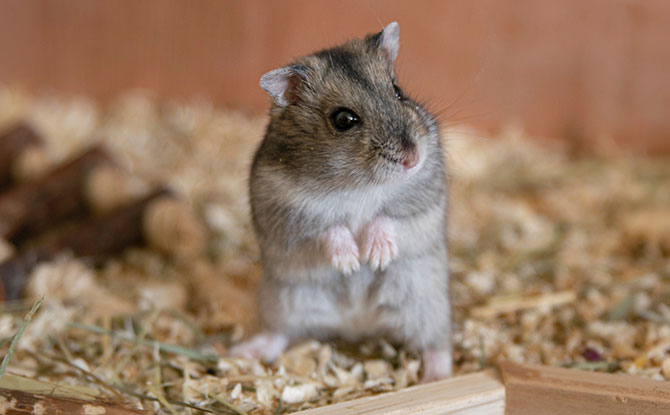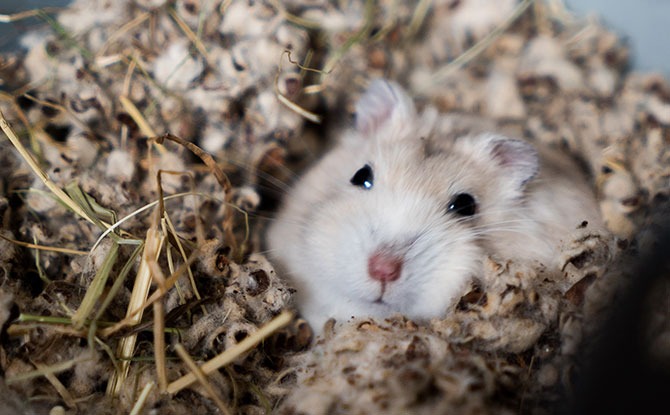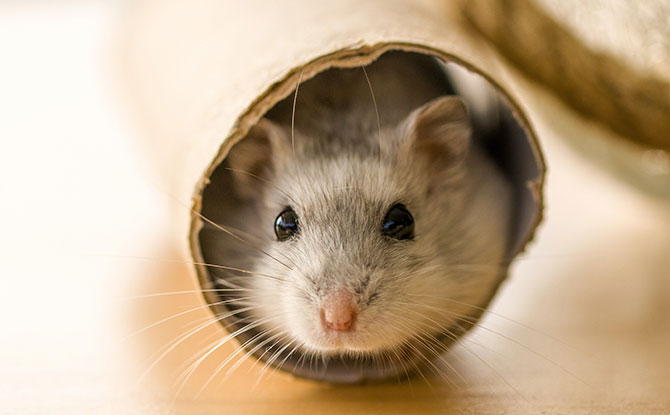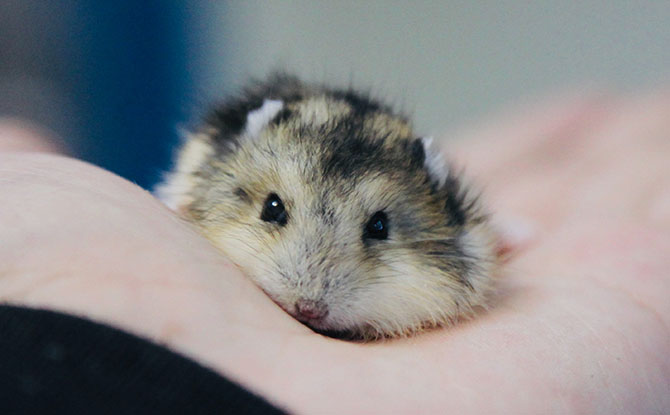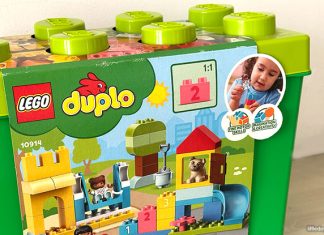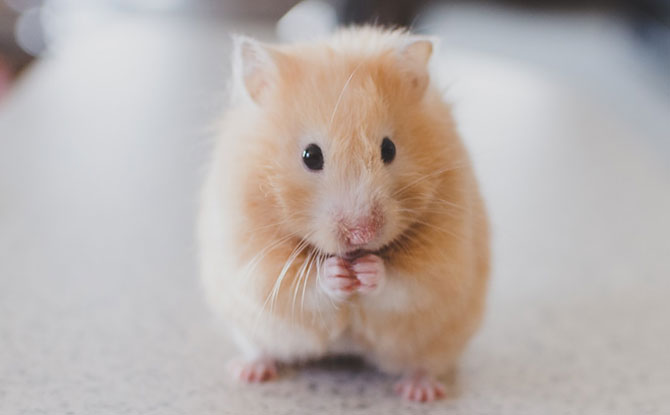
The companionship of a childhood pet is a precious gift that many will look back on with fondness. A popular first pet for many, myself included, is a hamster. There is a misconception that hamsters are a good “starter pet”. However, there is much that needs to be known about caring for hamsters. All furry lives, no matter the size, are important.
If you do wish to adopt a hamster, or currently own one, here are seven basic facts that you should know about owning and caring for a hamster.
This guide only provides an introduction to hamster care. Please continue to refer to reliable resources on how to care for your hamster and seek professional vet help if necessary.
Guide to Caring for Hamsters
1. Hamsters need a sizable cage
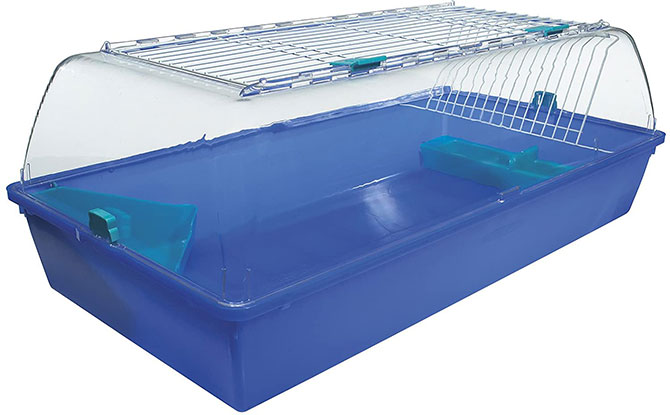
Probably the biggest first-time hamster owner mistake when it comes to caring for hamsters is getting a cage that is too small. Just because hamsters are tiny does not mean that they are happy with small spaces. Hamsters spend most of their lives in a cage and small cages will affect the hamster’s temperament same way we would feel being cooped up at home.
MID AUTUMN FESTIVAL: Lanterns, Lights and Festive Fun
GIVEAWAY FOR ENEWSLETTER SUBSCRIBERS: LEGO DUPLO Deluxe Brick Box
As a general rule of thumb, Syrian Hamster cages need to be at least 80 cm x 50 cm while Dwarf Hamster cages need to be least 70 cm x 40 cm.
Do note that as hamsters are ground-dwelling animals that like to burrow. They need unbroken floor space. This means that cages that have many levels, despite saving space, can cause injury to your hamster and should be avoided.
Some cages which fit this requirement include the Ruffy 2 Cage and Zoo Zone 2. You can also get creative and get a large IKEA Samla box (130L) which is great for a DIY cage for dwarf hamsters on a budget. This 270L box on Shopee can also be made into a DIY cage.
2. Hamsters are solitary animals
Hamsters do not get lonely nor need a friend. On the contrary, two hamsters together will become territorial and both being housed in the same cage can cause stress. They could even wind up fighting to the death.
Even sibling hamsters of the same gender might not always get along (human parents may understand) and can cause life-threatening injuries to one another.
There is also the issue of misgendering a hamster and ending up with an accidental litter which can get quite out of control.
3. Hamsters need the right bedding to burrow in
In the wild, hamsters have been observed to dig up to 0.7m deep and burrowing is a natural behaviour that if they are unable to do can cause stress. Not all beddings are safe for hamsters but safe beddings include Kaytee Clean paper-based bedding, aspen bedding, as well as Carefresh natural bedding.
Avoid Pine or Cedar substrates, as well as any scented beddings. Although scented beddings might mask unwanted odours, these can cause serious respiratory issues in the hamster.
Note that hamster cages do not need to be cleaned every week, basic spot cleaning every other day to ensure that the bedding is not wet or soiled is sufficient. A full cleaning can be done towards the end of every month. This also saves on bedding and money!
4. Hamsters need proper enrichment
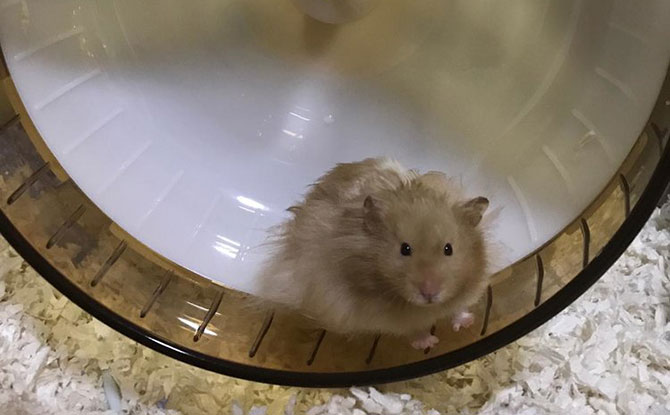
The most important accessory in a hamster cage other than a water dish is a hamster wheel. Hamsters are small but they have a lot of energy. As they can run 9 to 21 km in a single night, your hamster’s wheel must be the right size.
Here are the recommended measurements for wheel sizes according to the hamster’s breed.
Roborovski hamsters: 17 cm
Other dwarf hamsters: 21 cm
Syrians: 27 cm
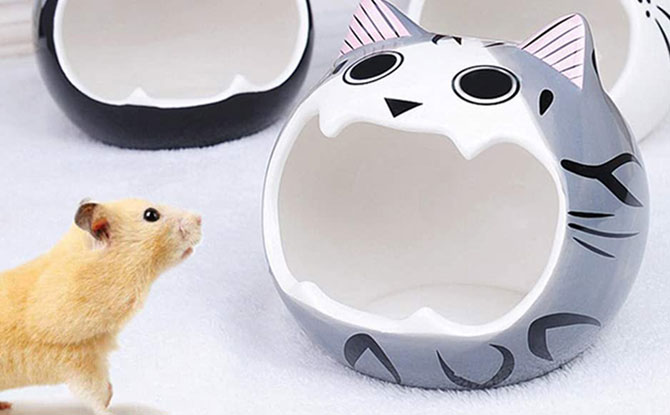
The hamster’s wheel should be comfortable enough for your hamster to run without arching its back. It should never have wire wheels or meshed wheels. The most affordable and safest wheel would be these large plastic ones.
A fun part of decorating your hamster’s cage includes the variety of adorable hideouts and toys to choose from. This is another reason to get a big cage. Some cute ones we spotted include this ceramic cat hideout for the brave hamster, a seashell one, or even one in the shape of a Pokeball! These make a great container to put sand baths, which is how a hamster keeps clean. Hamsters never need to be bathed with soap and water.
5. Hamsters will bite when scared

It’s easy to think that these cute and fluffy animals are harmless but when threatened or frightened they will instinctively bite to indicate that they are uncomfortable.
Parents must teach their kids never to hit or fling the hamster away as they can be seriously injured. Be patient and take the time to handle the hamster a little every day and start by putting food on the palm of your hand.
A “hack” when it comes to handling hamsters that are especially nervous is to wear gloves. It allows them to get used to being handled a little more each time.
6. A Little creativity goes a long way when caring for your hamster
It’s not too difficult to find items that are around the house that you can use as toys or hideouts for your hamster. Some examples include toilet rolls, empty tissue boxes and even shredded tissue paper as bedding.
You can also research on hamster safe treats that are cheaper and healthier for your pet hamster. One example would be these Gerber Puffs which are for human babies. The fruit flavoured ones are made with ingredients that are also safe for hamsters to consume and they don’t contain huge amounts of fillers or sugars compared to conventional hamster treats.
7. A hamster (or any kind of pet) is not a tool to teach responsibility
We all hope our kids will grow up to be loving and compassionate individuals. However, getting a child a pet to teach them responsibility is the same as encouraging another person to adopt a child to learn how to take care of one.
The responsibility for life, no matter how small or short should not be taken lightly. This is especially important when it comes to financially providing for the expenses. When it comes to important matters like taking a hamster to a vet or getting a hamster better care, it is unfair to let a hamster suffer because a kid “cannot afford to pay for it.”
Instead, encouraging your kid to start an “emergency vet fund” as well chipping in for necessities is a great way to get them involved, but keeping in mind that the hamster’s wellbeing should never be fully dependent on your kid.
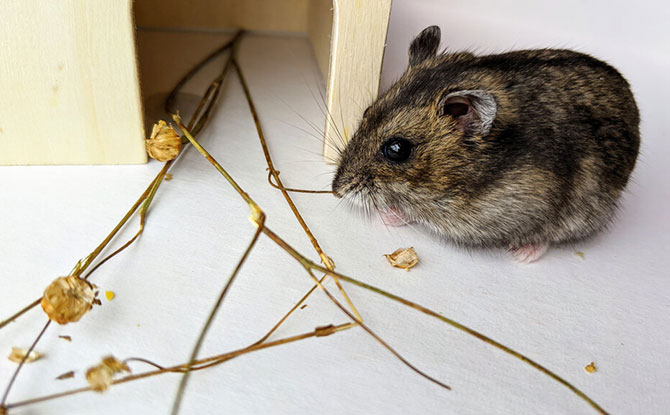
There are undeniable benefits of owning a family pet. As long as everyone in the family diligently does the research and shares the responsibility, your hamster is sure to live a happy and long life. One reliable source you can refer to is Hamster Society Singapore. It has a comprehensive guide on how to take care of your hamster, and you can even adopt one for your own!
READ: The Lost Elephant Shrew Rediscovered After 50 Years
SHOP: Attractive accessories for hamsters to add to the cage
This story contains affiliate links. This means we earn a small fee if you purchase something through a link from our website. There is no additional cost to you. This helps to support Little Day Out and keeps us going.





